Flying 1,300 mph on airplanes would be great. But future aviation has other plans.

In the year 2044, our cities might be energized by fusion power plants, our sleek cars may all run on electricity, and our doctors might regularly employ gene-editing to cure blindness.
But our airplanes will probably still fly at the same speeds they did half a century ago: between 550 and 600 mph.
Supersonic flight — which is to say speeds that exceed the speed of sound (768 mph) and can dramatically slash flight times — died out for civilians in 2003 with the retirement of the narrowly-shaped Concorde planes, which for 27 years cruised at 1,300 mph between the U.S. and Europe. "It failed," Bob van der Linden, the Chairman of the Aeronautics Department of the Smithsonian Institution’s National Air and Space Museum, said in an interview. "It was a technological marvel, but it was too expensive to operate."
Although a few ambitious supersonic startups like Boom Technology and Aerion Supersonic might successfully resurrect smaller business-style jets in the coming decades, commercial flying for the masses is unlikely to change much in the next quarter century, and beyond. Today's traditional aviation paradigm works, it's profitable, and it's safe.
"Since the 1960s, the top speed of an airliner has not changed," said van der Linden — and, he adds, he doesn't see any reason that it will.
"In 20 to 25 years, air travel might not look a whole lot different from how it looks today," Dan Bubb, a former pilot and now aviation historian at the University of Nevada, Las Vegas, agreed over email.
"I don’t think we expect to see any disruptive technologies," added Fotis Kopsaftopoulos, an assistant professor in the Department of Mechanical, Aerospace, and Nuclear Engineering at Rensselaer Polytechnic Institute, in an interview.
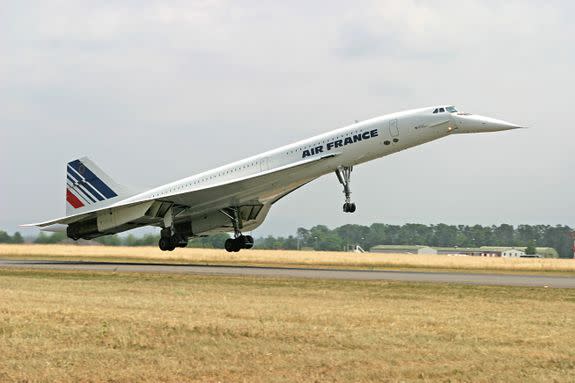
Image: Jacek Bilski/imageBROKER/REX/Shutterstock
These future aircraft will likely look the same as they do now, too.
"There’s not too much room to change the shape — we need wings and a round fuselage," Ryo Amano, a professor of mechanical engineering specializing in aerodynamics at the University of Wisconsin-Milwaukee, said in an interview.
But one thing will surely change.
"You’ll see airliners becoming more efficient," said van der Linden. "Any breakthrough will be for efficiency's sake."
This means burning less fuel, resulting in higher airline profits. It's already happening. Some new planes, like the Boeing 787 and the colossal Airbus 380, are built with lighter "composite materials" rather than heavier old-school metals, so they burn less fuel.
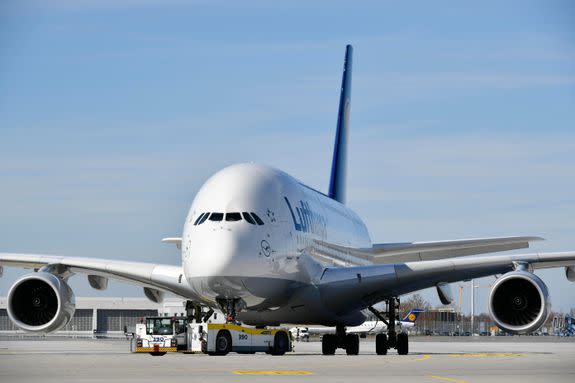
Image: Lex Rayton/imageBROKER/REX/Shutterstock
"They are lightweight and very strong," said Kopsaftopoulos.
New, more efficient engines are burning less fuel, too.
"You don’t really see many of the changes, but inside the engine system there is a tremendous amount of improvement," said Amano.
Supersonic dreams
Aviation experts are in wide agreement: Flying at supersonic speeds would slash flight times (imagine a 2.5-hour trip from New York to Los Angeles or London to NYC in under 3.5 hours), and as the Concorde proved, the blazing-fast engines and aerodynamic design technologies do exist. But there are a slew of formidable obstacles.
Traditional airliners might be slower, but they're moneymakers. In contrast, flying faster burns significantly more fuel. That means pricier flights.
"A conventional airliner gets better mileage than an SST [supersonic plane]," said van der Linden. "It’s as simple as that."
What's more, there was little demand to fly on the 1,300 mph Concorde planes. A seat was just too expensive. "The cost for one seat probably cost five times more than [a seat on] a 747," noted Amano.
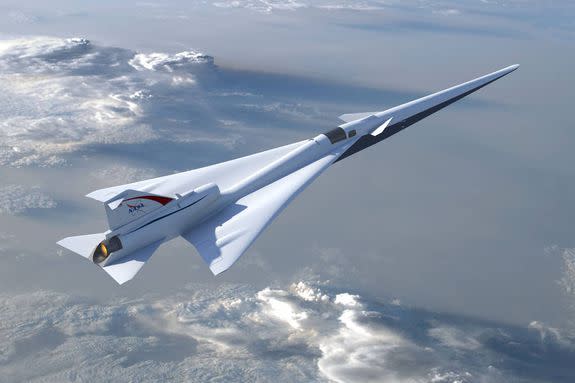
Image: nasa
"Let's face it, the overwhelming majority of citizens are not millionaires," added van der Linden. "There’s not enough traffic for high-priced stuff."
But if a supersonic plane did ever take to the skies, it would likely be smaller plane intended for wealthier demographics.
"It would be wonderful to see the return of the Concorde, but if the aircraft returns, it will be a much slimmed-down, more fuel-efficient version," said Babb.
A spokesperson for the supersonic startup Boom Technology said they're designing aircraft that "can operate profitably while charging the same fares as today's business class" over oceanic routes. For perspective, a round-trip business class ticket between JFK and London generally costs between $3,000 and $8,000.
SEE ALSO: The future of flying is electric planes
Like the auto industry, it's daunting for any startup, like Boom, to break into the aviation world. They don't just need billions of dollars, they have to prove to the vigilant Federal Aviation Administration (FAA) that their supersonic planes are profoundly safe.
"I wish them luck," said van der Linden.
Beyond financial hurdles, supersonics also have to contend with environmental woes. A recent report produced by the International Council on Clean Transportation — an organization that provides technical and scientific analysis to environmental regulators — estimated that a worldwide fleet of 2,000 supersonic planes by 2035 would emit prodigious amounts of carbon into the atmosphere.
"The environmental impact of building that many planes would be severe," said Dan Rutherford, the ICCT's program director for marine and aviation.
Such supersonic fuel-guzzling creates uncertainty for airlines that might be considering them, as the United Nation's aviation organization will almost certainly tighten emission rules to meet greater society's climate and environmental targets. "Everyone is wondering what environmental regulations they will need to meet," noted Rutherford.
And supersonic planes have one other mighty, unavoidable hurdle.
The booms.
Supersonic booms
Congress outlawed flying supersonic airliners over land in 1970, and for good reason. Sonic booms are thunder-like noises created when planes displace air and create powerful shockwaves, some of which slam into the ground. It's much "like a boat creates a wake in the water," explains NASA.
The booms jolt buildings, stir people awake, and can feel like a sharp earthquake. "If you’re not expecting them, they can be startling," NASA aviation engineer David Richwine told Mashable last year.
This limits supersonic planes to oceanic routes, further reducing their ability to be mainstream airliners.

Image: nasa
For this reason, the startup Aerion Supersonic plans to fly over land just under the speed of sound (known as Mach 0.95) "without a sonic boom," said a company spokesperson. But Aerion still has supersonic ambitions, and plans to develop planes that fly at around 920 mph (or 1.2 Mach), wherein the booms will dissipate before pummeling the ground.
Although overland travel is still illegal for the likes of Boom, Aerion, and others, the Federal Aviation Administration (FAA) may open the door for new supersonic planes to once again fly over land. This won't happen anytime soon (the new supersonic planes don't even exist), but the FAA is considering rules about noise certifications and other rules for supersonic planes — once the government settles on what boom levels are tolerable for us land dwellers.
"We have not published any rules as of yet — that’s still being worked out," FAA spokesperson Henry Price said over the phone.
"The direction we’re going is in the fact sheet," Price added, citing a webpage summarizing the proposed future rules for supersonic planes.
Likely to the delight of supersonic startups, in 2018 NASA started work on a prototypical supersonic plane, dubbed the X-Plane. The $247.5 million project isn't slated to take off until 2021, but when it does, the 94-foot test craft will soar over American neighborhoods and urban areas. It's an experiment: Are the booms from the innovative design mild enough for citizens to bear?
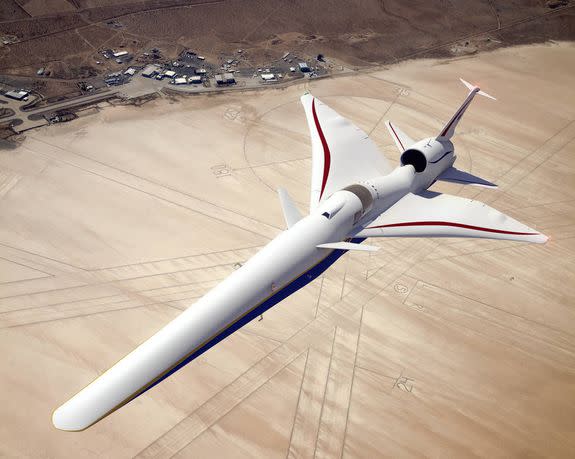
Image: nasa
It's certainly possible that NASA will be successful. There's a big group of aviation experts working on the project, and they have intriguing futuristic ideas, like plane exteriors that subtly morph in the air to tame sonic blasts. If all goes well, NASA's experimental plane will turn sonic booms into muted thumps.
"The work that NASA's doing might help that [sonic booms]," said van der Linden. "And a smaller plane might help that."
"But you can't eliminate it," he added.
Even if NASA is successful (it often is), aviation companies seeking to break the sound barrier will have to build planes similar to that low-boom design, airlines will have to order them, and the plane must pass rigid FAA standards.
"Is it going to be worth pursuing by the airlines?" asked Kopsaftopoulos. "I’m not sure what's going to happen."
Beyond Speed
While most passengers in a quarter-century will still be slogging through the atmosphere at 575 mph, that doesn't mean air travel won't make other futuristic leaps.
Flying, battery-powered taxis — small aircraft intended to make shorter urban jaunts — could become a reality in the next decade.
"Central Park to Brooklyn or Jersey City using an air taxi — that is very exciting," said Kopsaftopoulos.
There's also considerable aviation industry interest in fully-electric commercial airplanes, noted Kopsaftopoulos.
"It is ideal — we'll save huge amounts of fuel," added Amano, who said perhaps the technology could be tested in smaller commercial planes in a decade or so. What's more, there's a number of electric plane startups forging ahead, modifying existing planes, and planning for tests.
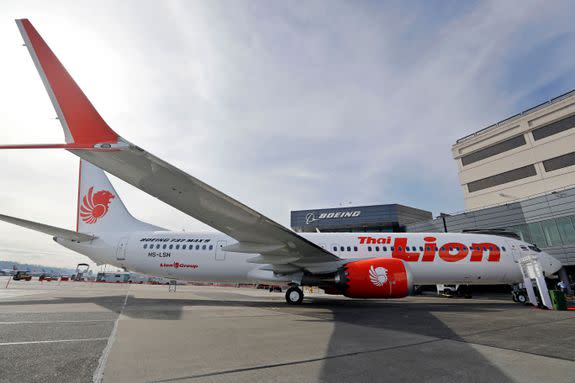
Image: Elaine Thompson/AP/REX/Shutterstock
But in the end, whether an aircraft runs on a massive battery that sits in its belly or pricey fuels, it's likely these planes will be flying at the speeds they've been flying since the mid-20th century.
Traveling at supersonic speeds is "astounding," said van der Linden, who had the opportunity to experience the Concorde flying at 1,300 mph. "You are flying faster than the Earth is spinning," he said, adding that it felt like traveling on a normal airliner.
But money wins the race. Our trusty, long-lived, old-school airliners are only replaced after decades and decades of service — by lighter, increasingly efficient planes with sleeker interiors, but never anything faster.
"Airliners do not break," said van der Linden. "They do fade away, but they don’t die."
WATCH: Ever wonder how the universe might end?


